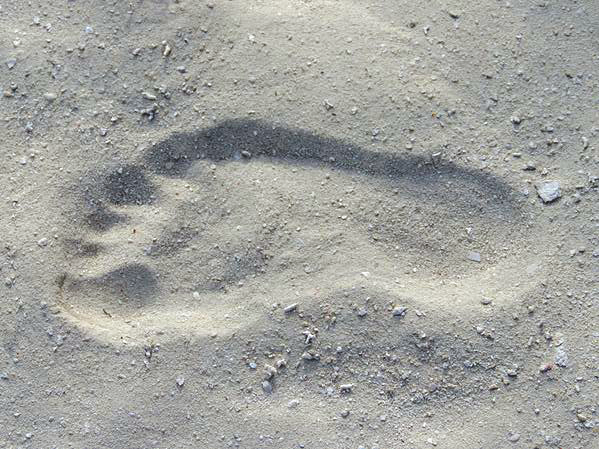Discover: Mossel Bay, South Africa
South Africa is known as the "Cradle of Humankind." A great variety of early human-ancestor fossil skeletons have been found there. Along the southernmost coast of South Africa, high cliffs hug a rocky coast. This protected the caves in the cliffs from people and animals who could have disturbed artifacts left by early modern humans from 160,000 to 50,000 years ago. Over the last 15 years, scientist Curtis Marean and his team have explored and excavated these caves. They have discovered the earliest evidence of using shellfish for food, fire to heat treat stones for stone tools, and the use of red ochre, possibly for body painting. Using modern scientific techniques, the team is learning more about how these early peoples lived. Follow the team into the caves to learn more.
Images courtesy the international research team SACP4, led by Arizona State University Institute of Human Origins Associate Director Curtis Marean.
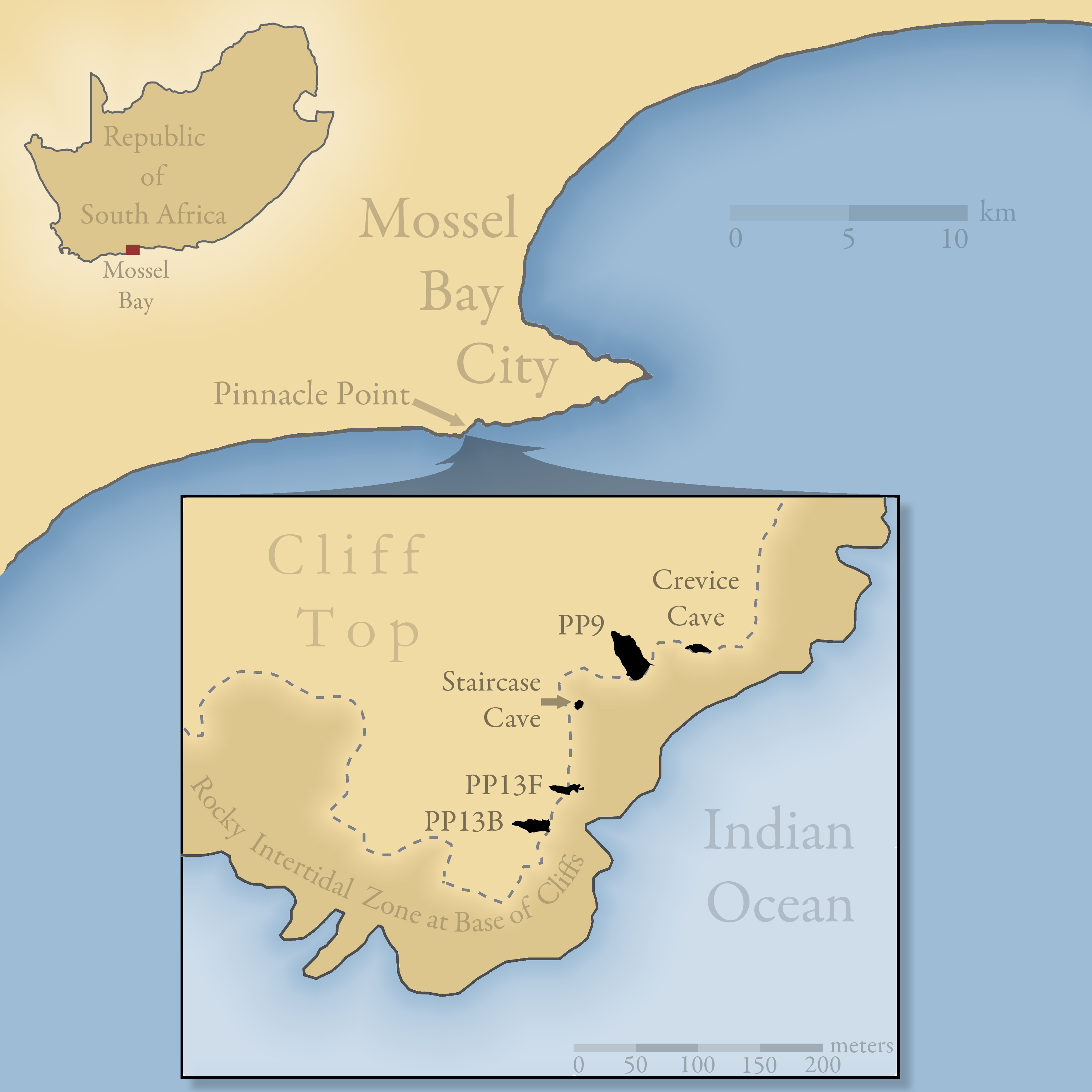
The Mossel Bay caves are located on the southern coast of South Africa about 388 kilometers or 241 miles east of Cape Town.
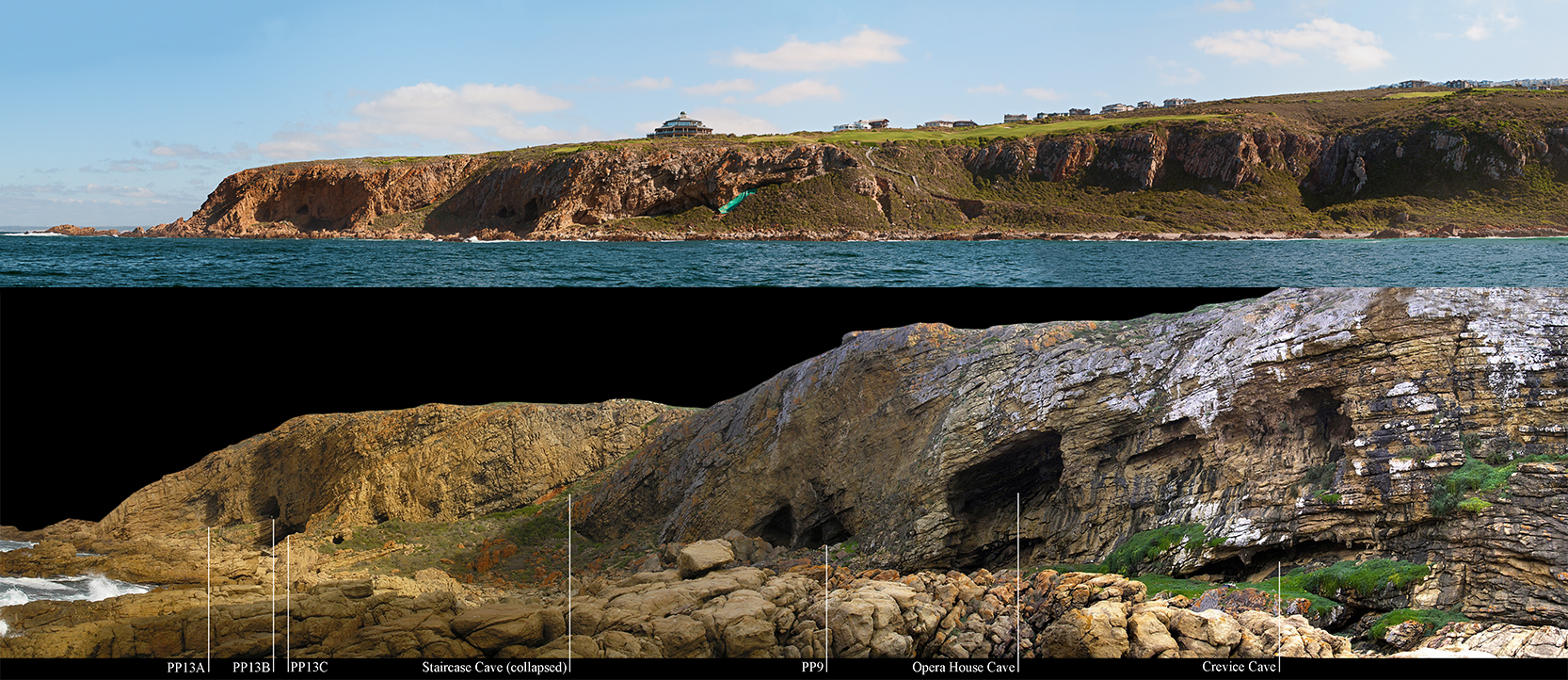
Pinnacle Point is on the western side of Mossel Bay in South Africa. The coastline is at the confluence of the South Atlantic and Indian Oceans, rich in sea life. The top image is Pinnacle Point. The bottom image is a close-up of the cave locations along the high cliffs.
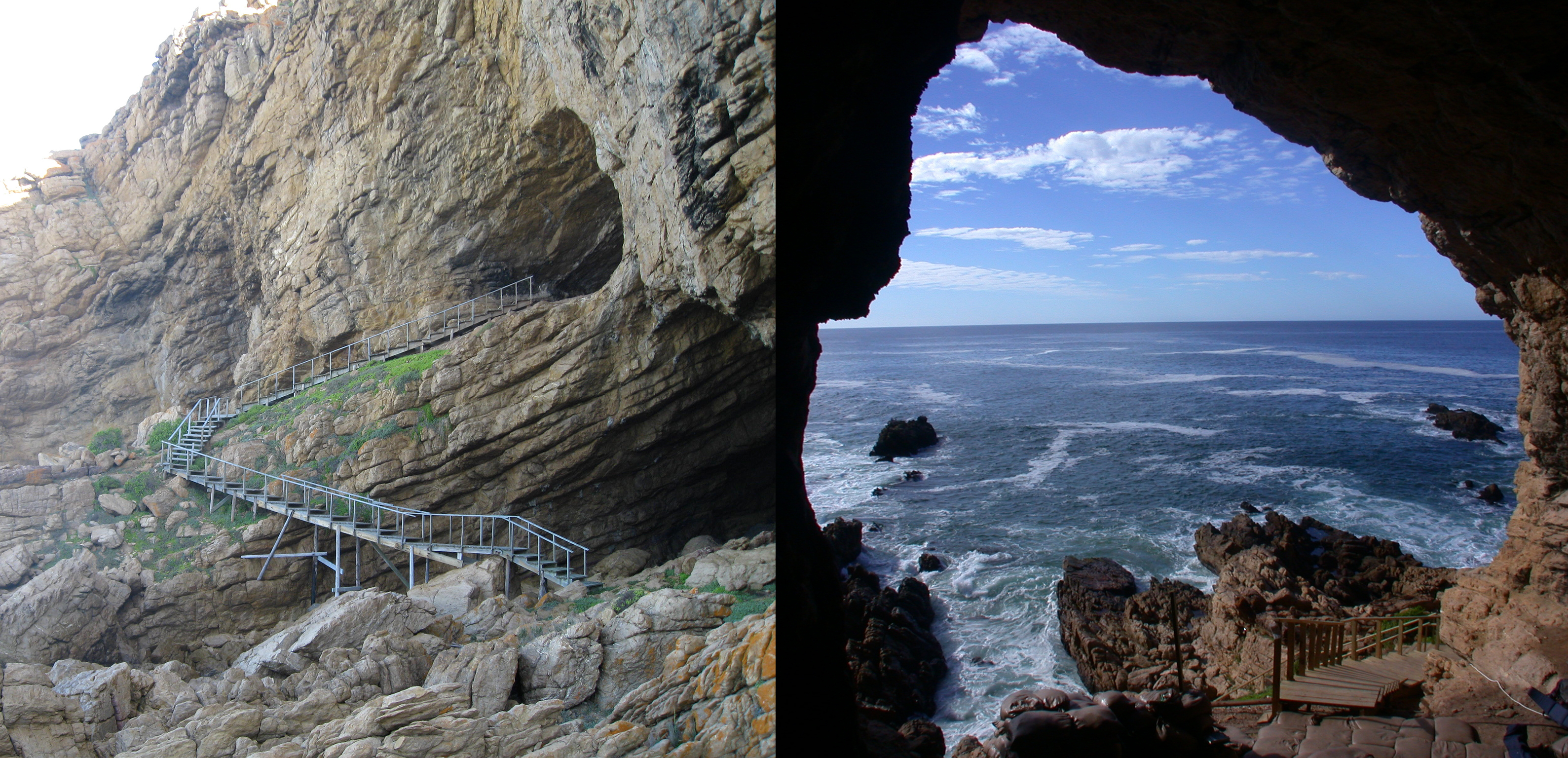
The Mossel Bay field team had stairs built so that the scientists and students could reach the cave sites without climbing gear (left). The view out the cave to the ocean is amazing (right).
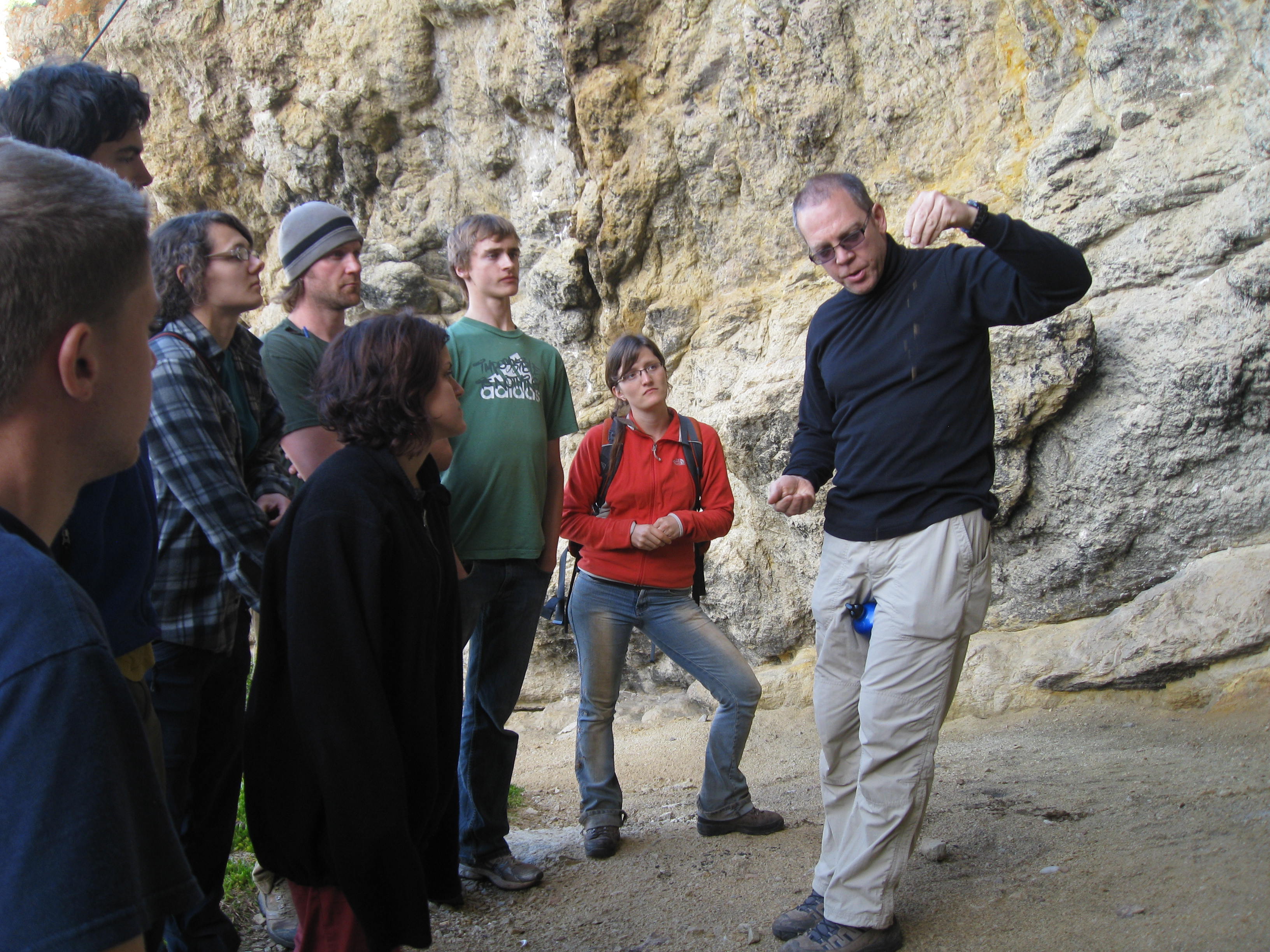
During a field season, students will learn about the geography, geology, plant, and animal life of South Africa—from today and from 160,000 to 50,000 years ago, when these caves were used by early modern humans.
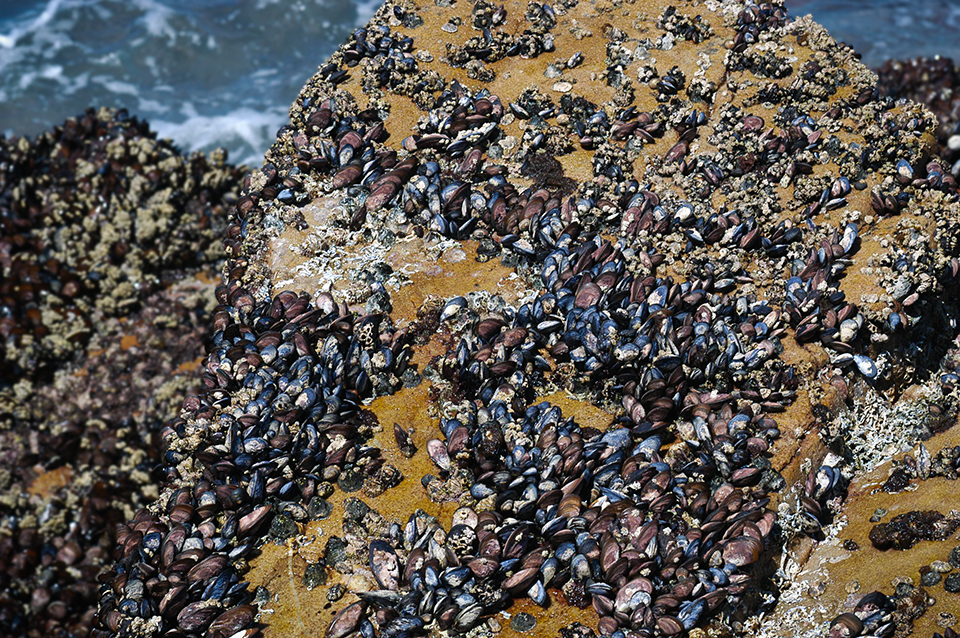
Shellfish, like these mussels, grow abundantly along the shore—as they have for thousands of years. Evidence of early modern humans using shells as food and adornment (like necklaces or on clothing) has been found in the caves.
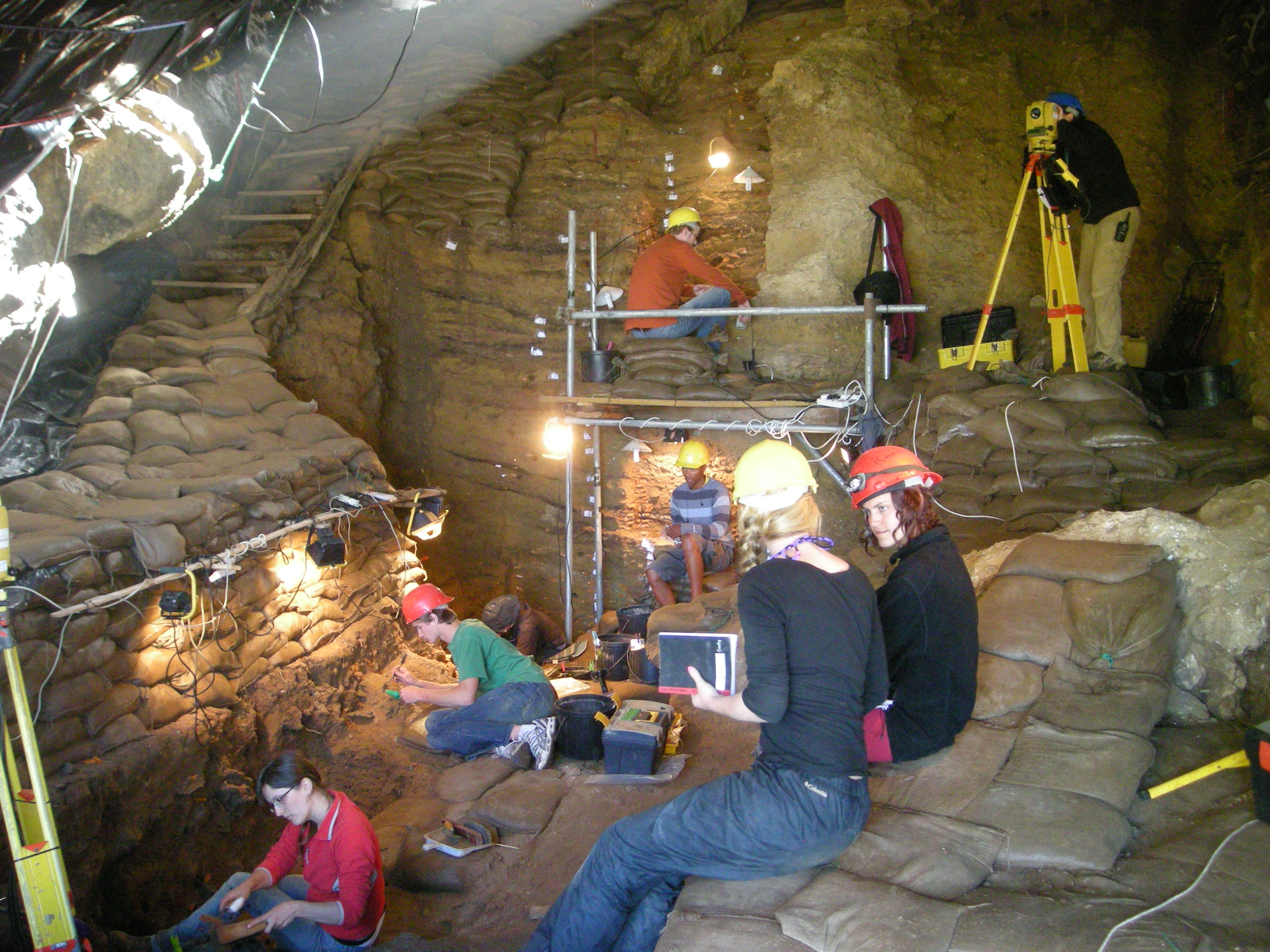
How do they find these bits of shells? By systematically digging down, layer by layer into the sediment, or dirt, in the cave. Here you see students working—digging, taking measurements by using a Total Station (the student standing in the upper right with the yellow device on the tripod), and writing in their field journals.
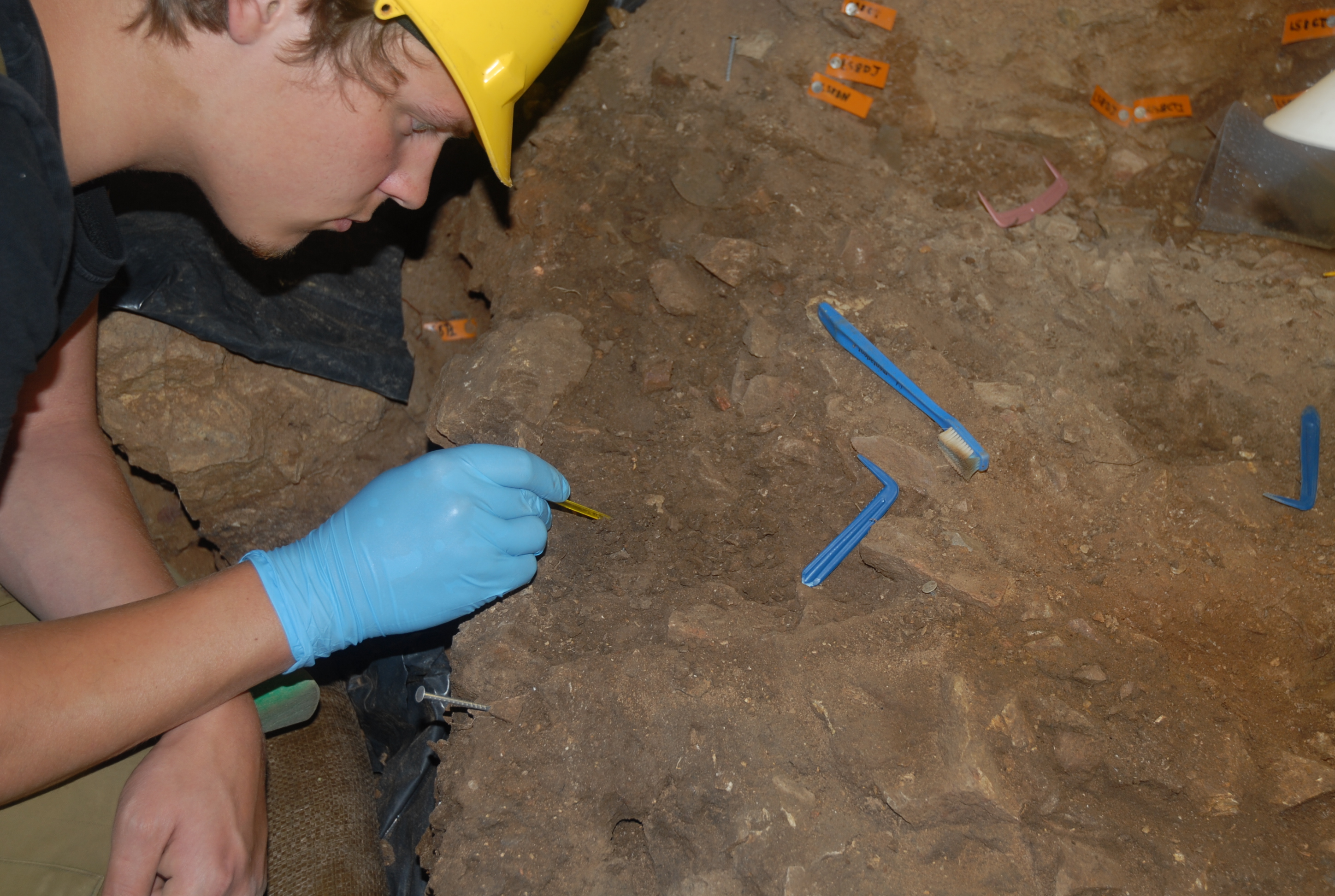
This student is carefully removing the sediment looking for the bits of shells or ancient stone tools that may be embedded in the dirt.
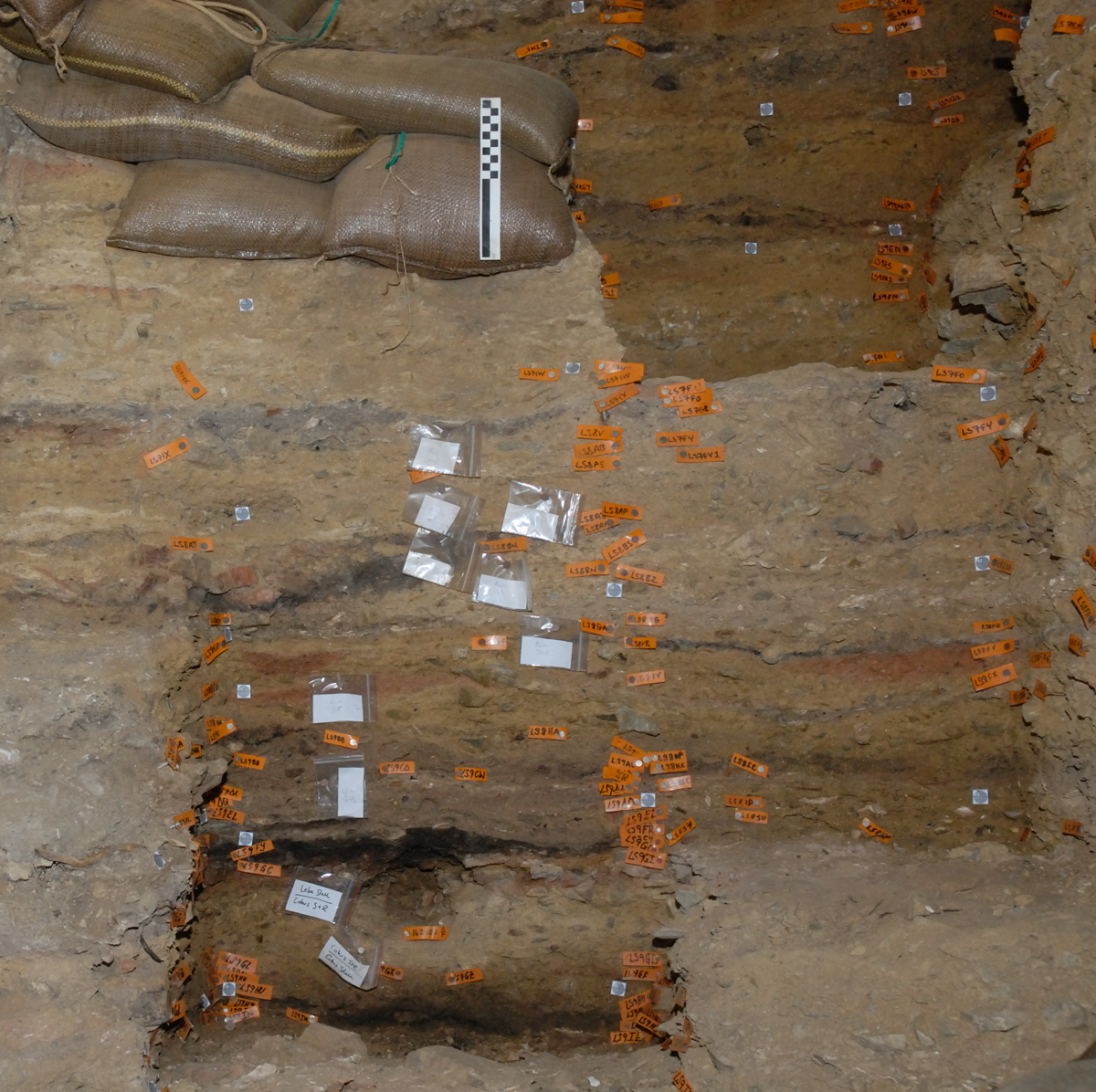
Orange flags show where shells or bits of stone tools have been found around an old fire hearth. You can see the darker dirt in the layers that show where a fire pit was thousands of years ago.
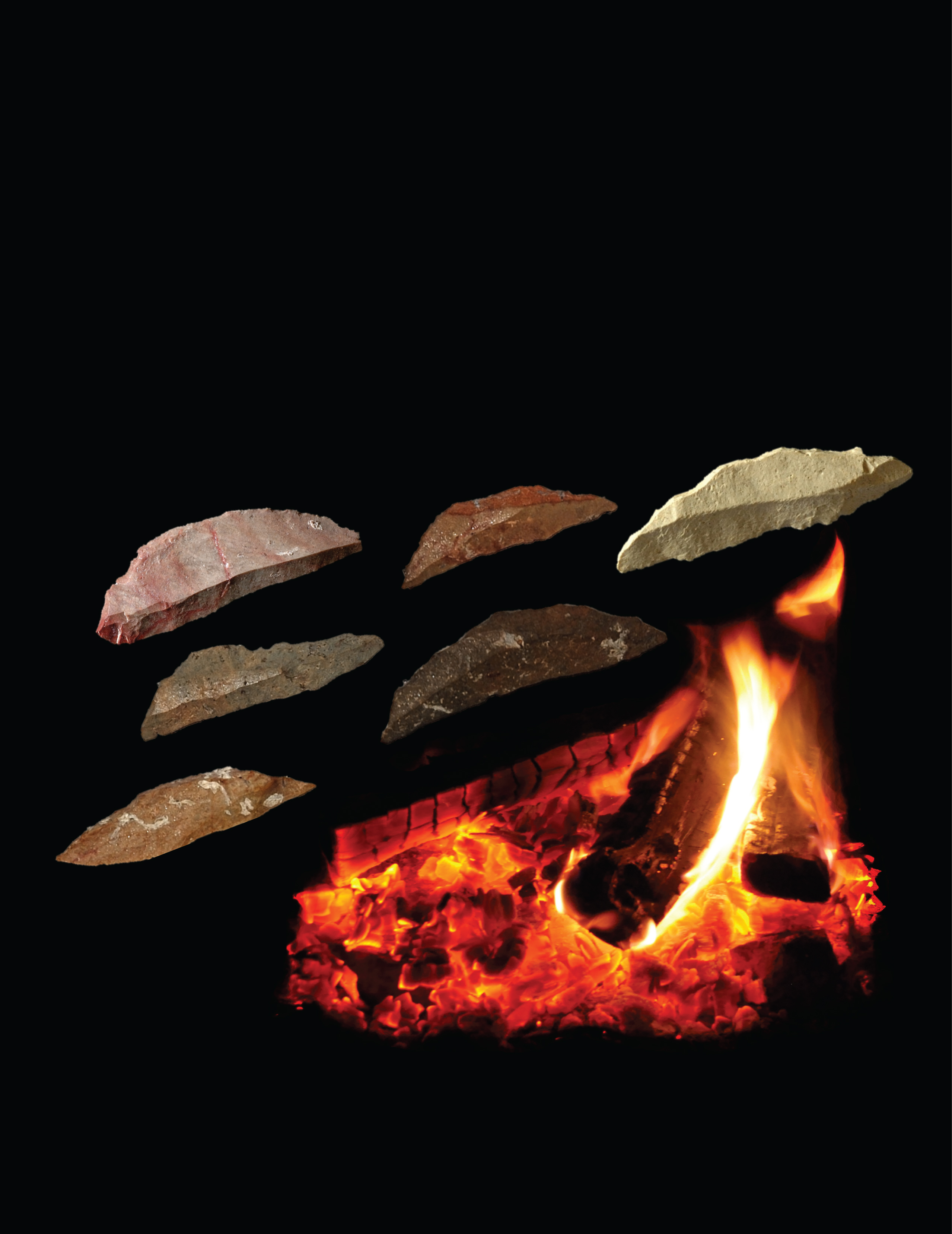
These fire pits may be where a soft stone called silcrete was baked under hot coals to make the stone hard enough to split or "knap" to make sharp cutting blades.
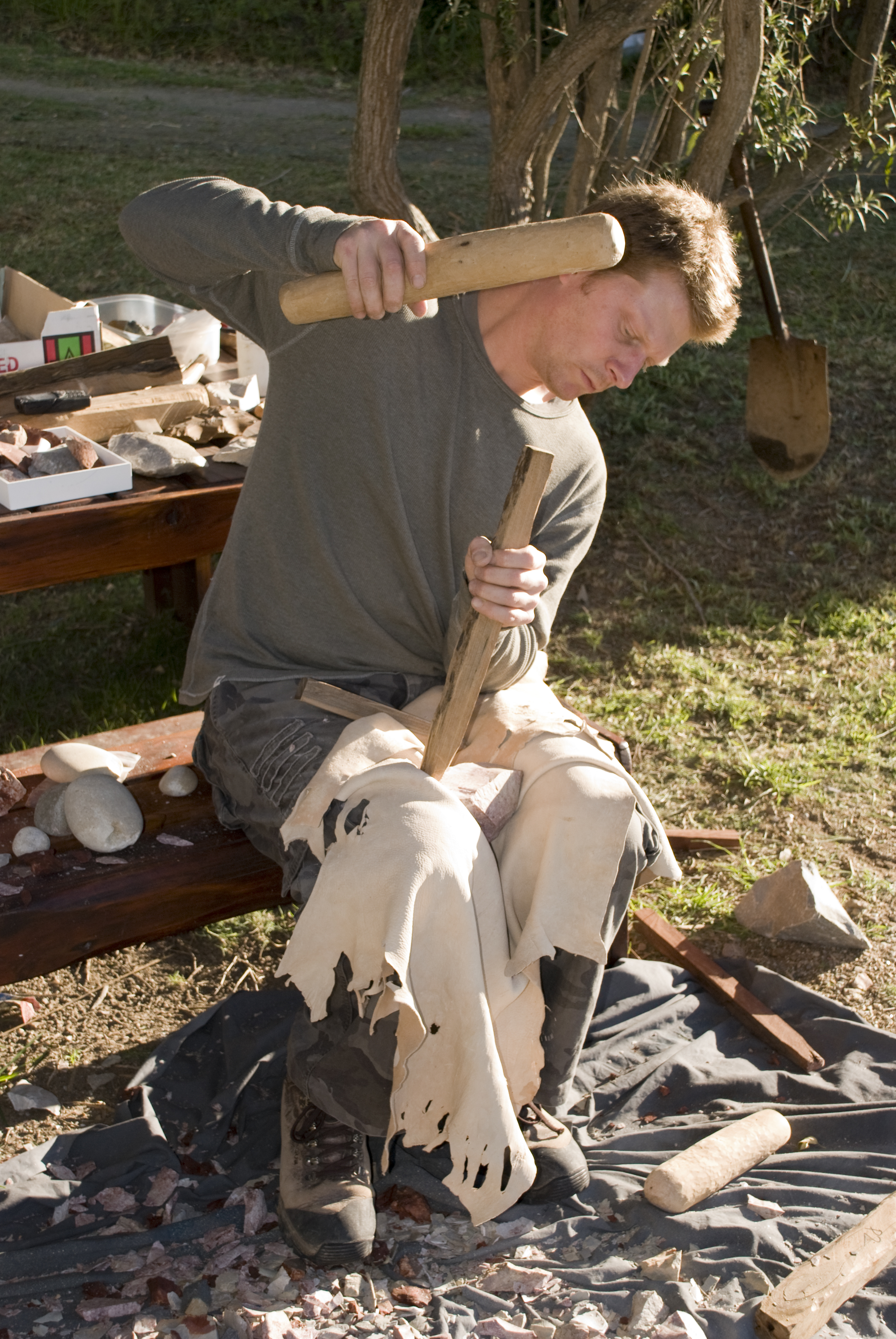
Here, scientist Kyle Brown recreates how the early modern humans would have used large wooden hammers and stones to make small, sharp stone blades that would have been used for hunting spears or arrows.
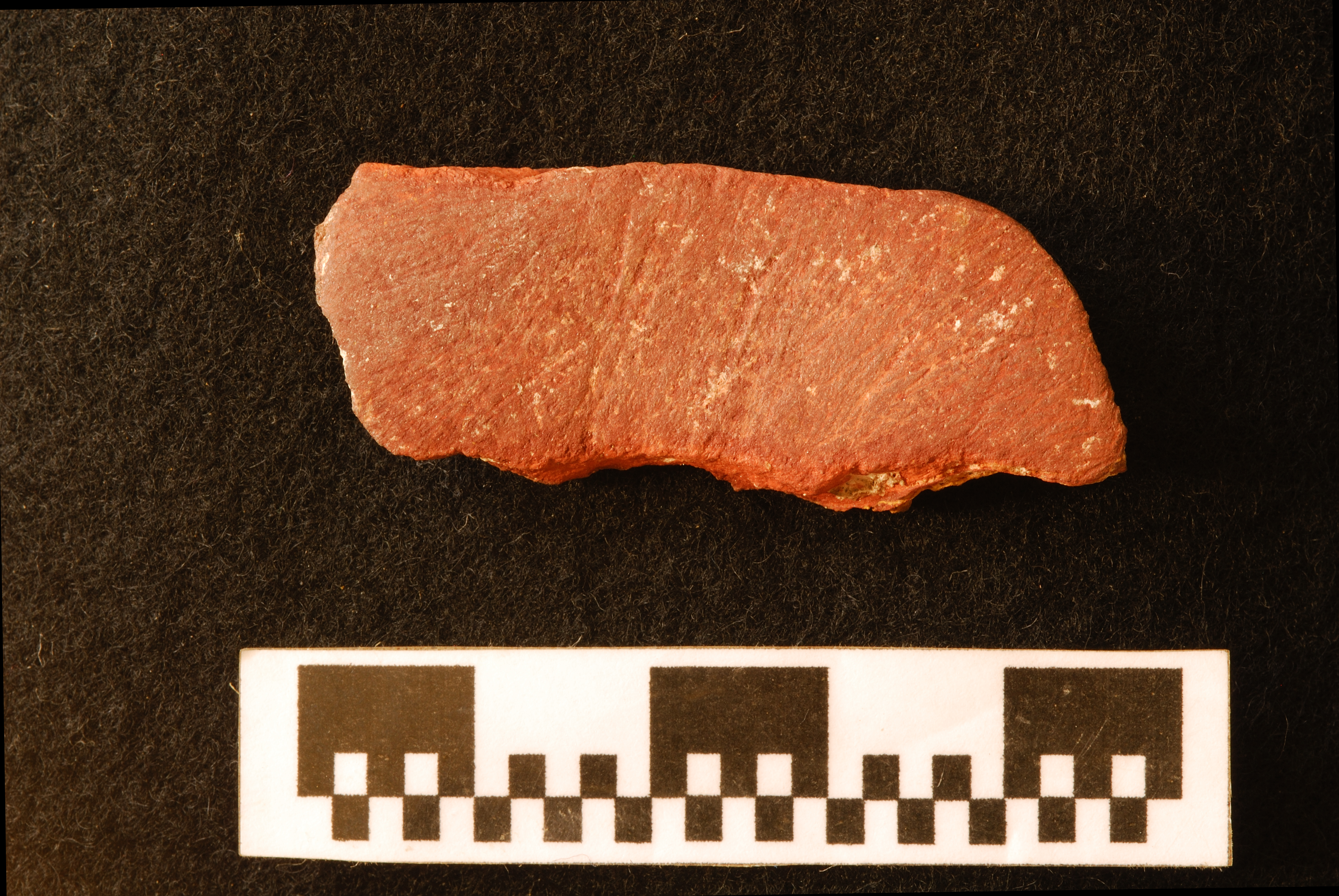
Evidence of red ochre has also been found in the layers of dirt in the caves. From residue left behind in shell fragments, scientists believe that the red ochre was used by early humans as body decoration, similar to how the Maasi people in Kenya use it to paint their bodies (see image below).
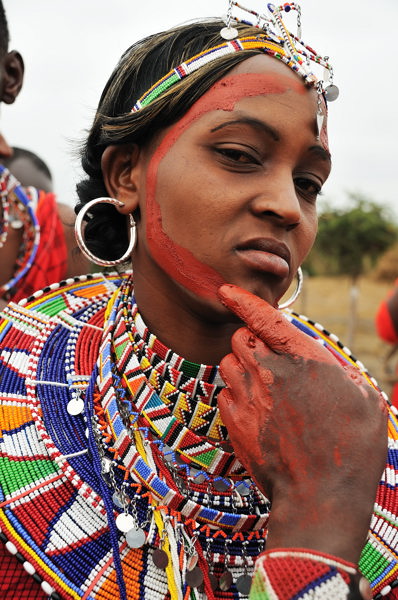
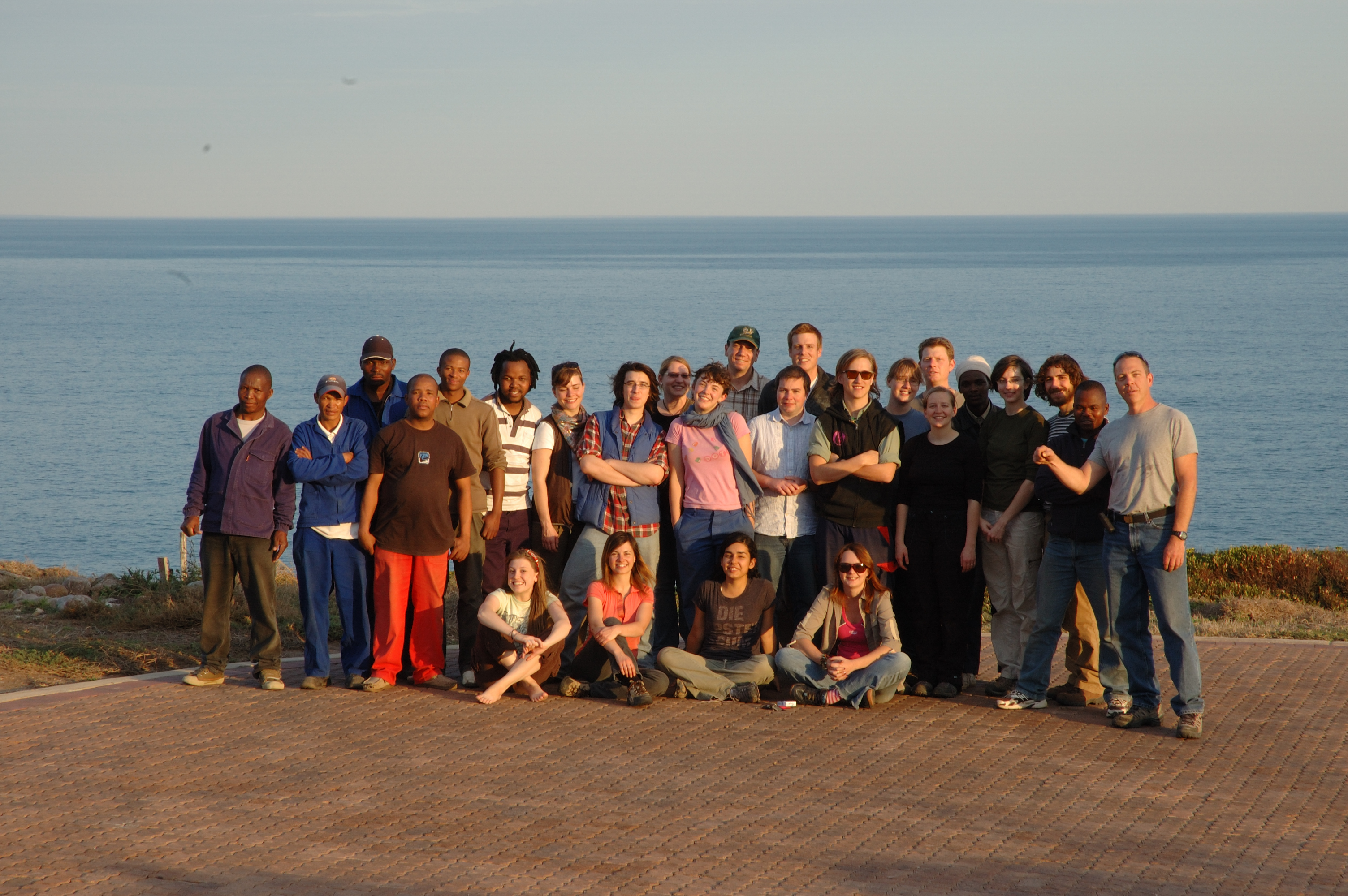
The field team photo—it takes many scientists and students over many years to excavate and analyze the artifacts that are found inside these caves.
Be Part of
Ask An Anthropologist
By volunteering, or simply sending us feedback on the site. Scientists, teachers, writers, illustrators, and translators are all important to the program. If you are interested in helping with the website we have a volunteers page to get the process started.

